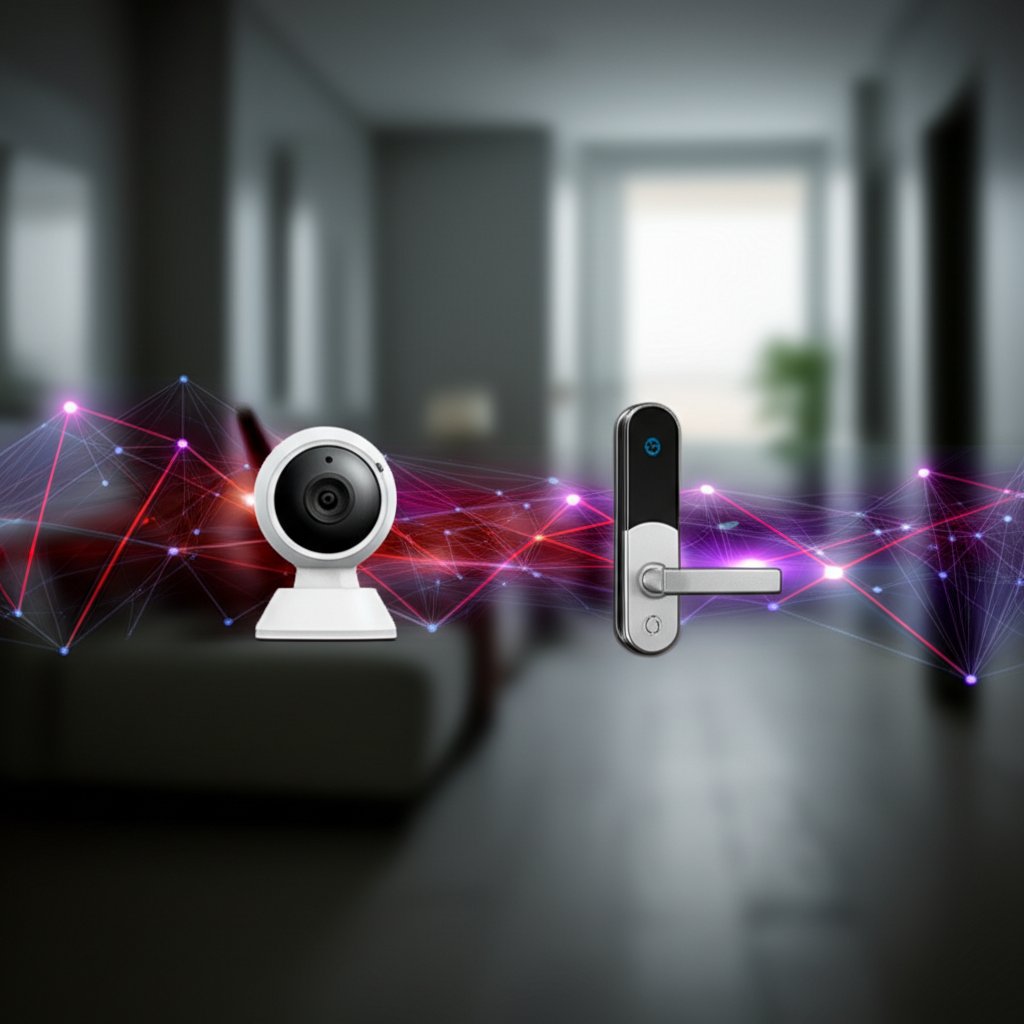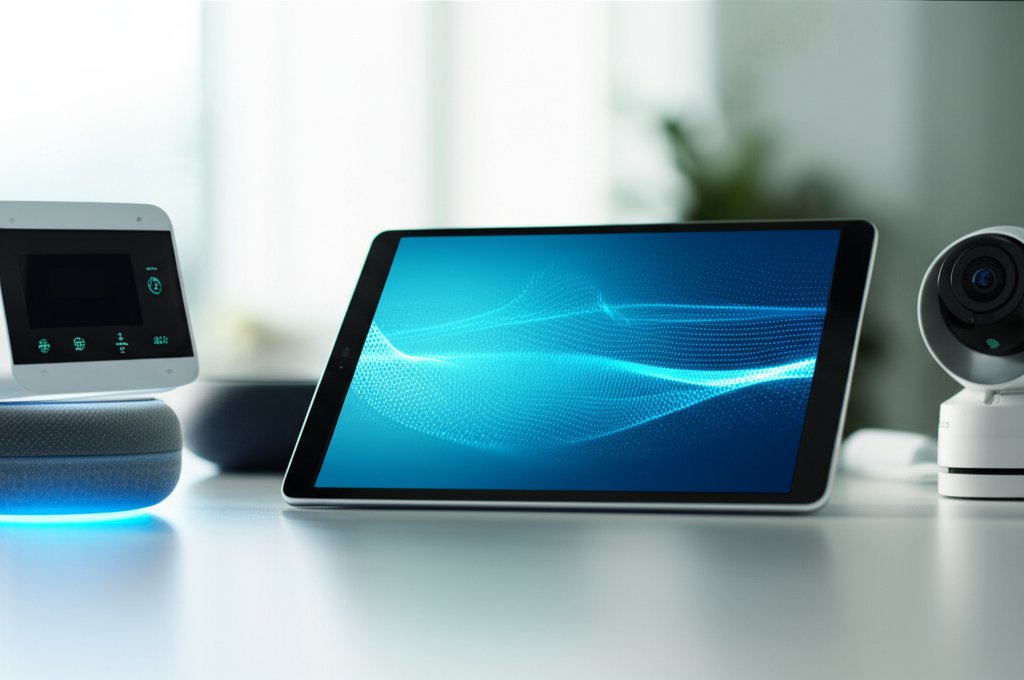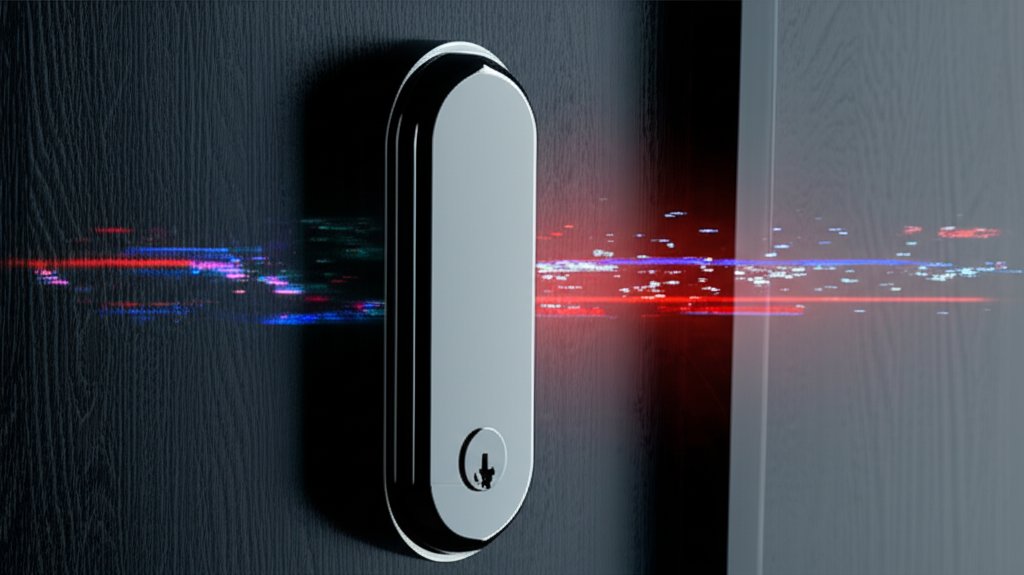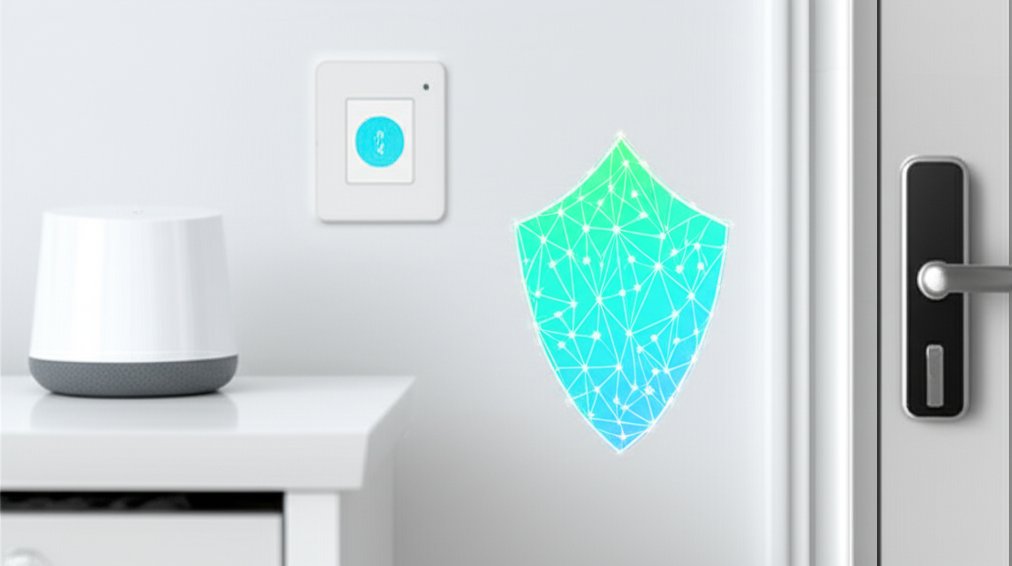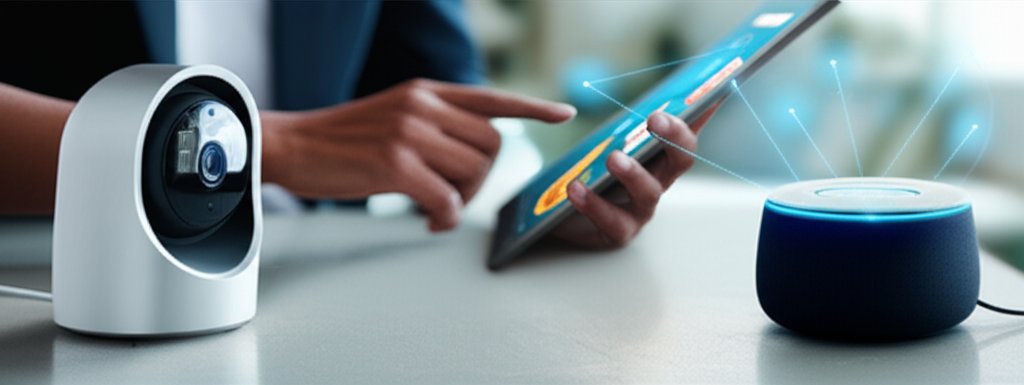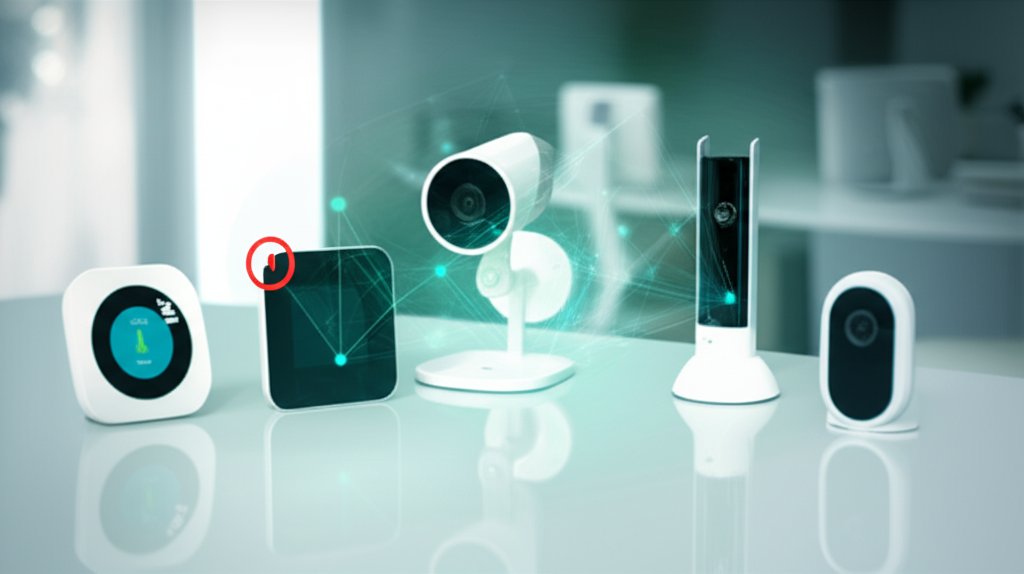The allure of a smart home is undeniably powerful, isn’t it? Imagine a life where your lights dim automatically as you settle down for the evening, your thermostat adjusts to your comfort before you even arrive, and your doors lock themselves with a simple voice command. Smart home devices—from thermostats and cameras to door locks and voice assistants—promise unparalleled convenience, fundamentally transforming how we live.
But as these interconnected gadgets become more integrated into our daily lives, a significant question looms large: how secure are they, really? We’re not just talking about traditional hackers anymore. The digital landscape is rapidly evolving, and with it, the threats. We’re now facing the specter of AI-powered attacks, which are making cyber threats faster, more sophisticated, and incredibly harder to detect than ever before. In fact, some reports indicate that attacks on smart home devices surged by 124% in 2024, with IoT malware attacks jumping nearly 400% in recent years. This is an alarming trend, one that we must confront.
You don’t need to be a cybersecurity guru to protect your digital sanctuary. Our goal today is clear and straightforward: to equip you with easy-to-understand, actionable steps to lock down your smart home against these advanced threats. Let’s take control of your smart home’s security together, empowering you to enjoy its conveniences without compromising your peace of mind.
Smart Home Basics: Convenience at Your Fingertips
At its core, a smart home is built on connectivity and automation. It’s a network of devices that can communicate with each other, and often with you, to perform tasks automatically or on command. Think about smart lighting that adjusts based on natural light levels, smart thermostats that learn your preferences, or security cameras that send alerts directly to your phone. These devices typically connect via Wi-Fi, Bluetooth, or specialized protocols like Zigbee or Z-Wave, all orchestrated through a central app or hub.
The New Threat Landscape: Understanding AI-Powered Attacks
Before we dive into solutions, let’s clearly define the challenge. You might be wondering, what exactly are “AI-powered attacks,” and how do they differ from the traditional hacking stories we hear? Simply put, artificial intelligence can make cyberattacks incredibly faster, more sophisticated, and much harder for traditional defenses to detect. Think of AI as an incredibly intelligent, adaptive, and tireless adversary capable of learning and evolving its tactics.
- Adaptive and Predictive Capabilities: Unlike static, pre-programmed attacks, AI can analyze target environments, learn from past attempts, and adapt its methods in real-time. This means it can predict vulnerabilities and exploit them with greater precision and speed than any human attacker.
- Automated Vulnerability Discovery: AI can rapidly scan and identify weaknesses in your smart devices or home network that a human attacker might miss, or take weeks to find. It can pinpoint misconfigurations or outdated software almost instantly.
- Advanced Phishing and Social Engineering: AI can craft incredibly convincing phishing emails, texts, or even AI-powered deepfake voice messages tailored specifically to you. By leveraging publicly available information, AI makes these deceptive communications almost impossible to distinguish from legitimate ones, increasing the likelihood of you clicking a malicious link or divulging sensitive information.
- Botnet Orchestration: AI can efficiently coordinate vast networks of compromised devices (known as botnets) to launch overwhelming attacks, like Distributed Denial of Service (DDoS) attacks, against targets. Even more concerning, it can leverage your secure smart devices for illicit activities without your knowledge, consuming your bandwidth or even becoming part of larger attack infrastructure.
- Adversarial AI: This is particularly insidious for smart homes. Adversarial AI can manipulate machine learning models, like those used in your security camera’s facial recognition or smart lock’s authentication system. It could, for instance, make your camera misidentify an intruder as a family member, or completely miss them. It can even trick a smart lock into thinking an unauthorized attempt is legitimate, bypassing what seems like robust security.
Why are smart homes particularly vulnerable to these advanced threats? Well, you’ve got numerous interconnected devices, each a potential entry point. Many smart devices also come with weaker default security settings compared to your smartphone or computer. And let’s not forget the rich source of personal data they collect – from your daily routines to your conversations – making them prime targets for privacy breaches or even physical disruption.
Your Immediate Action Plan: Foundations for a Secure Smart Home
With the understanding of these advanced threats, it’s time to act. Your smart home’s security is built on a strong foundation, starting with your home network and extending to every device. These are the first, non-negotiable steps.
The Foundation: Securing Your Home Network
Your Wi-Fi router isn’t just a gadget that gives you internet; it’s the digital bouncer for your home. It’s your first and most critical line of defense against any cyber threat, including those powered by AI. For a comprehensive guide on fortifying your home network security, refer to our detailed resources.
- Change Default Credentials IMMEDIATELY: This is non-negotiable. Those factory-set usernames and passwords (like “admin/password”) are publicly known and the first thing AI-powered attacks will try. Change them to something long, unique, and complex for both your router’s administration panel and your Wi-Fi network.
- Strong, Unique Wi-Fi Password: Don’t settle for a simple password. We’re talking about a complex passphrase that mixes uppercase and lowercase letters, numbers, and symbols, and is at least 12-16 characters long. Think of it as the master key to your digital home.
- Enable WPA2/WPA3 Encryption: Your router should offer WPA2 (Wi-Fi Protected Access 2) or, even better, WPA3. Make sure it’s enabled. This scrambles all data traveling over your network, making it unreadable to unauthorized eyes. It’s like sending your data in a secure, coded language.
- Keep Your Router’s Firmware Updated: Your router has its own operating system, called firmware. Manufacturers regularly release updates to fix security bugs and improve performance. Enable automatic updates if your router supports it, or make it a point to check for updates manually every few months. Ignoring these updates leaves known vulnerabilities open for AI-driven exploits.
- Create a Separate “Guest” or IoT Network: This is a powerful step in smart home security, particularly against AI-powered threats. Many modern routers allow you to create a separate network, sometimes called a “guest network” or an “IoT network.” Here’s why it’s vital: it isolates your smart devices from your main computers and phones. If a less secure, compromised device on the IoT network gets infected by an AI-driven attack, the attacker can’t easily jump across to your laptop containing sensitive financial data or your smartphone with personal photos. It’s like having a separate, walled-off section of your house for visitors.
Device-Specific Safeguards: Every Gadget Matters
Beyond your network, each individual smart device needs attention. This is where AI-driven attacks can really cause trouble if you’re not careful.
- Strong, Unique Passwords for Every Device & App: We cannot stress this enough. Reusing passwords is like giving a thief one key that opens every door in your life. If one smart device’s login is compromised (perhaps by an AI-driven brute-force attack), all your other accounts are immediately at risk. Use a robust password manager; it’s honestly your best friend here. Furthermore, investigate how passwordless authentication can offer an even more secure and convenient alternative.
- Enable Multi-Factor Authentication (MFA) everywhere possible to prevent identity theft: MFA adds a crucial extra layer of security. Even if an AI manages to guess or steal your password, it still needs a second piece of information—like a code sent to your phone, a fingerprint, or a facial scan—to gain access. It’s a significant deterrent against even the most sophisticated attacks.
- Regularly Update Device Firmware and Software: Just like your router, your smart devices have software that needs regular updates. These updates aren’t just for new features; they often contain critical security patches that fix vulnerabilities AI might exploit. Check manufacturer apps or websites frequently, or enable automatic updates.
- Review and Limit App Permissions & Privacy Settings: Do you really know what data your smart speaker is collecting or what your camera is sharing? Take the time to go through each device’s app settings. Turn off unnecessary features like microphones, cameras, or location tracking when you don’t need them. This reduces your “attack surface”—fewer ways for an AI-powered attack to find an entry.
- Research Before You Buy: This is a proactive step that pays dividends. Before purchasing a new smart device, look into the manufacturer’s security track record. Do they have a history of regular updates? Are their privacy policies clear? Opt for reputable brands that prioritize security and offer ongoing support. This can make a huge difference in your long-term security.
Building Your Smart Home Securely: From Ecosystems to Automation
Now that you have the foundational security principles in place, let’s look at how to apply them as you choose and set up your smart home, ensuring security is integrated from the start.
Choosing Your Digital Ecosystem: Alexa, Google, or HomeKit?
When you’re diving into smart home technology, one of the first decisions you’ll make is choosing an ecosystem. The three big players are Amazon Alexa, Google Assistant, and Apple HomeKit. Each has its strengths and weaknesses, and compatibility is key. Consider their commitment to privacy and security when making your choice:
- Amazon Alexa: Widely compatible with a vast array of devices, known for its extensive skills and integration with Amazon services. If you’ve got Echo speakers, you’re probably already in this camp. Be diligent about reviewing privacy settings and voice recording retention.
- Google Assistant: Deeply integrated with Android phones and Google services, offering robust voice commands and intelligent routines. Nest devices are a prime example here. Similar to Alexa, privacy settings require careful attention.
- Apple HomeKit: Offers strong privacy features and seamless integration with other Apple devices. It tends to be a more curated ecosystem, often perceived as having tighter security and more rigorous device certification processes.
You’ll want to pick the one that best suits your existing tech and preferences. Remember, compatibility isn’t everything; a strong privacy policy and security-first design should be significant factors.
Essential Smart Devices for Every Home
Once you’ve chosen your ecosystem, it’s time to populate your home. Here are some common categories you’ll encounter, each with its own security implications:
- Smart Lighting: Bulbs and switches that you can control remotely or automate. Ensure they connect to your secure IoT network.
- Smart Thermostats: Devices like Nest or Ecobee that learn your schedule and optimize energy use. These collect data on your presence and habits, so review their privacy settings carefully.
- Smart Security Cameras: Indoor and outdoor cameras for monitoring your home. These are critical devices; choose brands with strong encryption, cloud security, and prompt firmware updates.
- Smart Locks: Keyless entry systems that you can manage from your phone. Security is paramount here; prioritize strong encryption and MFA.
- Smart Speakers/Displays: Devices like Amazon Echo, Google Nest Hub, or Apple HomePod that serve as central control points and voice assistants. Understand their microphone settings and data retention policies.
- Smart Plugs: Simple devices that turn any electrical outlet into a smart one. While seemingly low-risk, they are still network-connected devices and need secure passwords.
Setting Up Your Smart Home: A Step-by-Step Guide with Security in Mind
Setting up your smart home doesn’t have to be intimidating, especially when you factor in security from the start. Most devices are designed for user-friendly installation:
- Download the Manufacturer’s App: This is your control center for the device. Always download from official app stores to avoid malicious copies.
- Connect to Power: Plug in your device.
- Follow In-App Instructions: The app will guide you through connecting the device to your Wi-Fi network. Crucially, during this step, immediately change any default passwords the app might suggest and enable MFA. Connect these devices to your dedicated IoT network if you have one.
- Consider a Smart Home Hub: While many devices connect directly to Wi-Fi, a central hub (like Philips Hue Bridge or SmartThings Hub) can improve reliability, reduce Wi-Fi clutter, and enable more complex automations, especially for devices using Zigbee or Z-Wave protocols. Hubs can also centralize security management.
Make sure your home network is up to the task. Reliable Wi-Fi coverage across your home is essential for all your smart devices to communicate effectively and securely.
Automate Your Life: Smart Routines and Integrations
The real magic of a smart home lies in its automation capabilities. You can create “routines” or “scenes” that trigger multiple actions based on time, presence, or other device states. For example:
- “Good Morning” Routine: At 7 AM, your smart blinds open, the lights slowly brighten, and your smart speaker plays the news.
- “Leaving Home” Routine: When your phone leaves the geofence, your lights turn off, the thermostat adjusts, and your doors lock automatically. Ensure geofencing permissions are carefully managed for privacy.
- “Movie Night” Scene: Your living room lights dim, the TV turns on, and the smart blinds close.
The possibilities for integration are vast. Your smart devices can work together to make your home more comfortable, efficient, and secure. Just think about what you’d like your home to do for you, and consider the security and privacy implications of each integration.
Voice Control: Command Your Home with Your Voice
Voice assistants are often the interface we associate most with smart homes. Whether you’re using Alexa, Google Assistant, or Siri, these assistants allow you to control devices, get information, and even communicate with others, all with spoken commands. It’s incredibly convenient, isn’t it? Just say “turn off the lights” and it’s done. But with this convenience comes important security considerations: be mindful of where these devices are placed, review your privacy settings for voice recordings, and understand how your commands are processed and stored.
Advanced (But Still User-Friendly) Protections
Ready to go a step further? These measures don’t require a computer science degree but significantly enhance your security posture.
- Hide Your Network Name (SSID Broadcasting): A simple step, but effective. You can often disable “SSID broadcasting” in your router settings. This makes your network name less visible to casual scanners, adding a minor layer of obscurity.
- Consider a Router with Advanced Security Features: If you’re buying a new router, look for models with built-in firewalls, intrusion detection, or even VPN capabilities. These can offer an added layer of protection and encryption against sophisticated threats.
- Monitor Your Network for Unusual Activity: Some advanced routers or third-party tools can help you visualize what devices are connected to your network and if there’s any suspicious outbound traffic. Unusual traffic patterns could indicate a device has been compromised by an AI-driven attack.
- Maintain an Inventory of Your Smart Devices: It sounds simple, but knowing exactly what’s connected to your network is powerful. Keep a list. This helps you track updates, identify forgotten devices, and quickly spot potential vulnerabilities or rogue connections.
- Consider a Cybersecurity Hub/Software for IoT: Solutions like Bitdefender BOX or similar services offer centralized security for all connected devices on your network. They act like a dedicated guardian, scanning for threats and managing updates across your entire smart home ecosystem, offering protection against even the most sophisticated AI-powered threats.
What to Do If Your Smart Home is Compromised
Even with the best precautions, incidents can happen. Knowing what to do can limit the damage and help you regain control swiftly.
- Act Quickly: If you suspect a device is compromised, disconnect it from your network immediately. Unplug it, disable Wi-Fi on it, or block it at the router level.
- Change All Related Passwords: Especially if you reused passwords, change them across all affected devices and accounts. Don’t forget your Wi-Fi password.
- Factory Reset: If possible, perform a factory reset on the compromised device to wipe its data and settings.
- Monitor Other Devices: Keep a close eye on other devices on your network for any unusual activity.
- Report the Incident: Notify the device manufacturer. Depending on the severity, you might also consider reporting it to cybersecurity authorities.
The Cost of Convenience: Smart Home Investment
Building a smart home is an investment, both in terms of money and time. Devices range from affordable smart plugs to high-end security systems. While the upfront cost can add up, the long-term benefits in energy savings, convenience, and peace of mind (especially when you’ve secured it properly) often outweigh the initial outlay. It’s about finding the balance that works for your budget and lifestyle, always with security as a primary consideration.
Troubleshooting Common Smart Home Issues
Every smart home owner will encounter a glitch now and then. Here are a few common issues and general advice:
- Device Offline: Check its power, Wi-Fi connection, and router. A simple restart often works wonders. Ensure it’s still connected to the correct (e.g., IoT) network.
- Automation Not Triggering: Verify your routine settings, check device statuses, and ensure all devices involved are online and communicating effectively.
- Voice Assistant Not Responding: Make sure your assistant device is powered, connected to the internet, and listening. Check for app updates.
- Compatibility Issues: Double-check manufacturer specifications and consider a central hub if you have many devices from different brands.
Future-Proofing Your Connected Home
The smart home landscape is constantly evolving. As new technologies emerge, so will new features and new security challenges. Staying informed about new threats and best practices is an ongoing process. Thinking about future expansion means not just adding more devices, but also considering how they integrate securely and how you’ll maintain their security over time.
Securing your smart home against the advanced and evolving threats of AI-powered attacks might seem daunting, but it doesn’t have to be. We’ve gone through simple, actionable steps that you can implement today to significantly protect your digital sanctuary. It’s an ongoing process, not a one-time fix, but with vigilance and by adopting these best practices, you can enjoy the unparalleled convenience of your smart home with genuine peace of mind. You truly don’t need to be a tech expert to have a secure smart home; you just need to be proactive and informed.
Start small, be diligent, and expand confidently. Join our smart home community for tips and troubleshooting to keep your connected home safe and smart.
